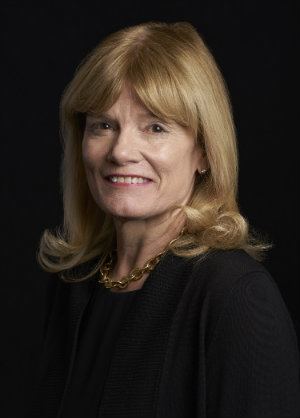 Terry Fulmer, PhD, RN, FAAN, started as the John A. Hartford Foundation's new President this week.
Terry Fulmer, PhD, RN, FAAN, started as the John A. Hartford Foundation's new President this week.As I begin an exciting new chapter of a career deeply embedded in geriatrics, I am thrilled by the opportunity to serve as the new President of the John A. Hartford Foundation and bring all of my experience, expertise, and energy to the challenging task of creating transformative change in the way health care is delivered to older Americans.
Many of you already know me, but for those of you who don’t, let me briefly introduce myself: Most recently, I was University Distinguished Professor and Dean of the Bouvé College of Health Sciences at Northeastern University. Before that, I was the Erline Perkins McGriff Professor of Nursing and founding Dean of the New York University (NYU) College of Nursing. For 15 years, I also served as co-director of the Hartford Institute for Geriatric Nursing at NYU, and have held faculty appointments at Boston College, Columbia University, Yale University and the Harvard Division on Aging. I also am an elected member of the Institute of Medicine, and have held leadership positions at the American Geriatrics Society and the Gerontological Society of America, among others. My passion for improving the care of older adults has been central in all of these roles.
As someone who first received funding from the Foundation in 1992, I know how iconic the John A. Hartford Foundation is in the field of aging and health. Since I started my new role on Monday, I have primarily been doing one thing: listening. I have met with our talented and dedicated staff, many of whom I’ve known for years. And on Wednesday, I visited our longtime grantee SCP in Pennsylvania to talk about the vital role that communications plays in the work we do. The importance of communications is underscored by the fact that it is part of one of five funding portfolios created under the Foundation’s new strategic plan.
In the coming weeks, I will be meeting with the extended JAHF community—grantees, partners, other foundations, and friends—to learn from them and listen to what they think about our work and mission. These meetings will take place at national and regional meetings, through site or direct visits, small groups, and one-on-one conversations.
For those wondering whether the transition to a new President indicates any change in the Foundation’s direction, let me state that the Foundation and I are firmly committed to the strategic plan approved in 2012 that focuses on more directly influencing large-scale practice and policy change that improves the health of older adults and their families.
For three decades, the John A. Hartford Foundation has played a leading role in building academic geriatrics expertise in medicine, nursing, and social work. Foundation support helped create a cadre of dedicated health professionals who understand the complexities involved in delivering competent, coordinated care to older Americans. I believe that our new strategic direction moves the Foundation from strength to strength.
Through our Hartford Change AGEnts Initiative, launched in late 2013, the Foundation has been engaging our network of geriatrically expert doctors, nurses, social workers, and health systems leaders to join in the hard work of driving practice and policy change. Those efforts will only deepen.
I look forward to the opportunities my new role offers to passionately advocate for the quality care that older Americans deserve, but too rarely receive.
I believe that the John A. Hartford Foundation is uniquely positioned to play a leadership role in driving change that results in higher-quality, person-centered care at lower cost for the rapidly growing number of older adults and their families. And I look forward to the opportunities my new role offers to passionately advocate for the quality care that older Americans deserve, but too rarely receive.
As I meet with members of the extended JAHF community, I want to examine ways to deepen and improve the implementation of our new strategy. I also hope to explore new ideas, such as regional and cross-institutional collaborations and projects, new partnerships with federal and state governments, engagement with other private funders and personal philanthropy, as well as other ideas to bolster and enhance our efforts on behalf of older adults.
As this process continues, I look forward to sharing with you what I hear and what I’m thinking. I truly appreciate the warm welcome I received at last weekend’s American Geriatrics Society annual scientific meeting and during my first week at JAHF. And I hope you will join us as we move forward in these exciting times.
